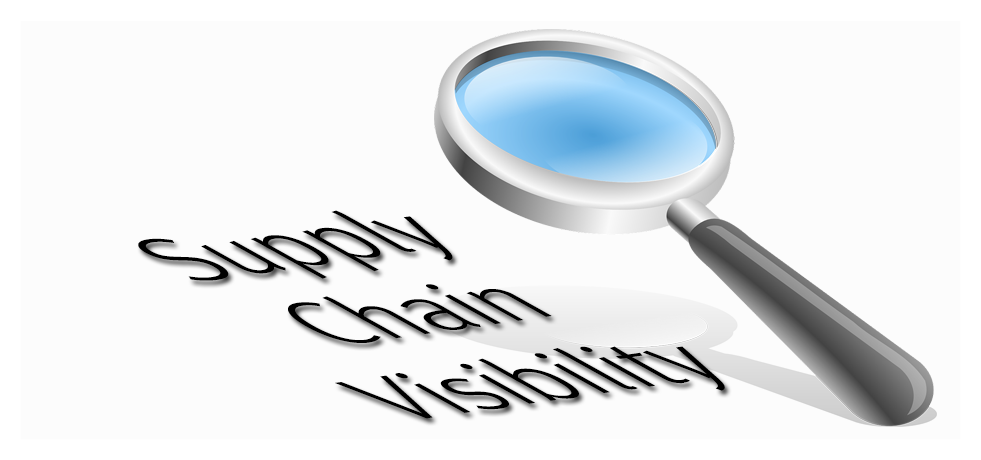Supply chain visibility is a big deal these days, so you won’t struggle to find sources of information on the topic.
Many of those sources however, would have you looking at your business information systems and scratching your head, wondering just how to integrate them with those of your suppliers and partners to gain the visibility you need.
What those sources usually fail to mention is that actually, decisions about technology are not the first step, but perhaps the fourth or fifth in the journey to a transparent supply chain.
The first steps in gaining supply chain visibility have little to do with technology, and everything to do with people and process.
First: Build a Visibility Culture
If you want to attain end-to-end supply chain visibility, or even visibility into key parts of your supply chain, you first need to engage all players in the necessity for visibility, and ensure they are aligned as to what visibility actually means.
Typically, visibility means different things to different people. For example, your customers, partners, and even different functions in your company might believe in very different priorities for gaining supply chain visibility. Therefore, the first step necessary to improve supply chain visibility is to explore the priorities of key stakeholders.
Identify Goals and Depth of Visibility
This exploration should be conducted by a cross-functional team, and should address the alignment of visibility goals, as well as the level or depth of visibility required to meet them.
For example, your company’s goals may be to leverage visibility to:
- Reduce inventory
- Improve protection against supply chain risk
- Increase sales revenues
- Enhance customer service
For each goal, you’ll need to reach a common understanding as to whether continuous, real-time visibility is necessary, or if for example, periodic snapshots of data will suffice.
Establish Trust Between Stakeholders
Trust (or the lack of it) is one of the biggest obstacles to supply chain visibility efforts. Your supply chain is probably made up of a number of trading partners working together, but that doesn’t necessarily mean sufficient trust exists for each partner to start freely sharing data, a vital prerequisite for true supply chain visibility.
Dialogue between your supply chain organisation and its partners (and possibly customers too) will be necessary to establish data-sharing guidelines and policies, to ensure goals are aligned, and to allay any potential mistrust which will otherwise put an end to visibility efforts before they even get started.
Once trust has been established, your company and its supply chain partners will be ready to move on to the next phase in the supply chain visibility drive—collaboration.
Putting the Visibility Culture to Work
When all supply chain partners are aligned on visibility strategy and goals, and trust has been established, it will be time to start the visibility effort proper. Even at this point though, it’s a little early to be worrying about a shared visibility platform, although technology will begin to feature in your project.
The next step is to start collaborating with partners to improve end-to-end processes, particularly in terms of the way information flows up and down the supply chain.
Wherever possible, opportunities should be sought to simplify workflows, eliminate information bottlenecks, and break down information silos that divide internal departments in each of the partner organisations.
While in collaborative mode, it will also pay to look at existing systems and processes to see if they present opportunities to improve visibility.
You may identify possibilities to increase visibility through relatively small process changes. It’s surprising how much difference can be made when supply chain partners begin to work in concert toward meeting shared visibility goals.
Ready to Bring in the Technology?
Once a visibility culture has been established, you can start to look at what technology might be necessary, either to provide end-to-end supply chain visibility, or to provide visibility in certain high-priority areas, such as track-and trace capability in transportation, inbound visibility for more accurate demand planning, or visibility of inventory in distribution centres and warehouses.
Getting visibility data out of a system is becoming an ever simpler affair, especially when cloud computing technology is exploited to make data accessible via user-friendly web-portals. First though, you have to make sure the right data goes in.
Data-gathering tends to be the biggest technical challenge in a supply chain visibility project, and the more partners involved in your supply chain, the greater the challenge.
If your company doesn’t want to invest in a solution to aggregate structured and unstructured data from multiple sources, you might decide to outsource the task to a 3PL partner. Many 3PLs have begun to specialise in providing transport/logistics management and visibility capabilities as a service to small and medium enterprises.
Some Essentials to Look For in Visibility Solutions
Whether you decide to implement an in-house solution or outsource your visibility needs to a 3PL, there are certain things to look out for in order to simplify your journey to supply chain visibility and save money on the way.
For example, an agnostic platform should be considered as essential, to save your company, supply chain partners, and customers from the frustrations of connecting systems to gather and disseminate visibility data. Cloud solutions tend to offer the most neutrality, being relatively easy to plug into from just about any ERP or other type of business IT application.
While your supply chain partners and internal departments may be agreed on what visibility means, it’s not reasonable to expect that everyone wants to see things in the same way.
Effective supply chain visibility benefits everyone, enabling data consumers to choose the types and formats of the maps, charts, and reports that they use. Therefore your chosen software solution/s must provide for a high degree of flexibility in data visualisation.
Of course it should go without saying that your chosen solution should also provide supply chain visibility from any device or computer, anywhere and at any time by way of a web browser.
As a final word of technology guidance, try to choose a software platform that will help you use visibility-data proactively, which means one that can be programmed to provide users with automated alerts for key events and process exceptions.
Supply Chain Visibility is People First, Technology Second
While technology vendors and even some 3PLs will be pleased to have you believe supply chain visibility comes down to the right choice in software platform, there’s actually far more to it than that.
People still run your supply chain and without the early application of change and culture management, people will present the most significant obstacles to supply chain visibility.
Before you make your technology decisions, work on your processes and your people. They are the foundations for success with supply chain visibility, and should therefore be the focus of your first steps towards a more transparent, competitive, and profitable supply chain.

